by Kevin Hsu
語言:
English
Photo credit: Tsai Ing-wen/Facebook
LAST WEEK’S monumental elections represent a major historical moment for Taiwan: the nation’s first female president, the first majority in parliament for the democratic opposition, and a broad outpouring of civic engagement that shows democracy is alive and well.
The striking results have come about not only because of “regular” rumblings of economic discontent or the “traditional cleavages” of identity politics. More importantly, the narrative of Taiwanese society has changed, redrawing the bounds for what is possible, and revealing novel sources of inspiration.
It is not merely demography, but the transformation of a society’s hopes and dreams that has made all the difference.
Finding a Cause, Serving the Nation
IN AN EARLIER era, devoting one’s life to the Republic of China (ROC)—as a faithful soldier, a dedicated official, a financial backer, or erstwhile guardian of the 1911 Revolution—was an aspirational choice.
Whether your goal was to improve society and advance the general welfare, to feel important by gravitating towards the center of power, or simply to embody a revolutionary spirit, a person could seek out a life of greater meaning by dedicating him or herself to national service.
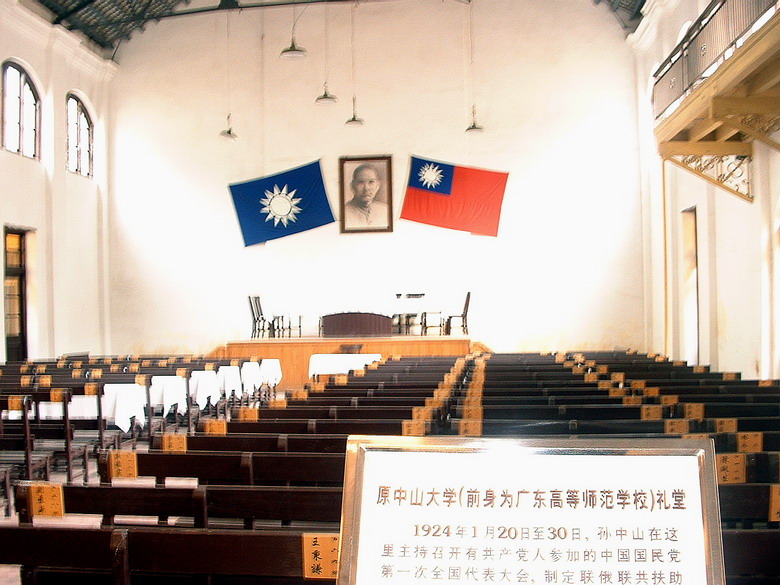 Venue of the first KMT National Congress in 1924 in Canton, China. Photo credit: WikiCommons
Venue of the first KMT National Congress in 1924 in Canton, China. Photo credit: WikiCommons
In such a system, rightly or wrongly, membership in the ruling Nationalist Party (KMT) was perceived as a vehicle through which one could find and pursue that higher cause.
In 2016, this perception no longer holds. For many Taiwanese today, and especially among the young, the KMT is not widely regarded as a beacon of service to society. It has lost the hearts of an increasingly public-minded and activist millennial generation.
Once Upon a Revolution
WHEN IT FIRST formed—across an oceanic Strait, in the remnants of a different Empire—the KMT was the vanguard of revolution. Born from the United League (tongmenghui), it attracted reform-minded intellectuals and social activists to its ranks.
Fast-forward a few decades. The Nationalists had already been swept out of China, but sitting atop an authoritarian apparatus, they now wielded power on the island of Taiwan with impunity. Occupying the territory after World War II, the Nationalists set about constructing a state and molding a new citizenry. Tragically, the process included arresting dissident civilians, clamping down on free speech, and suppressing local Taiwanese identity.
Though Taiwan’s decades of consistent growth as one of the “Four Asian Tigers” appeared to give credence to the KMT’s reputation for developmental competence, the party also fattened itself on the prospering economy and became increasingly complacent. Corruption metastasized, intertwining with the party’s DNA to shape its political activities.
Political repression was most violently expressed during the 2-28 Massacre in 1947 and the subsequent horrors of the White Terror era, which saw kidnappings, torture, and executions of suspected opponents of the Nationalist regime. While such heavy-handed measures were later restrained, a slew of inappropriate “black gold” strategies have continued in more covert forms, including bribery, intimidation, and other monied politics.
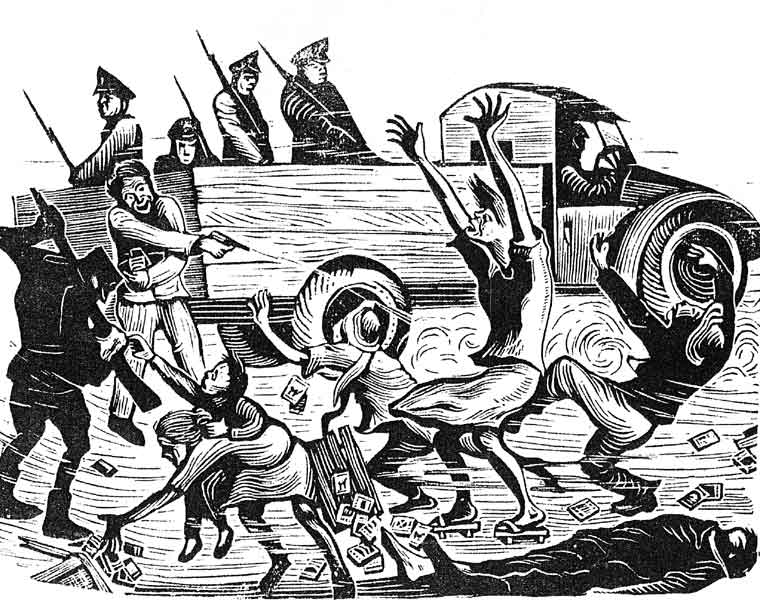 Famous depiction of the 228 Incident, “The Terrible Inspection” by Huang Rong-zan
Famous depiction of the 228 Incident, “The Terrible Inspection” by Huang Rong-zan
Even after the end of Martial Law in the 1980s and the legalization of opposition parties, the KMT’s sense of entitlement changed little. The party has never lost the sneering belief that it deserves public allegiance and the final say, simply due to its historical legacy.
This dark side of the KMT coexists with the veneer of revolution. The spark of science, democracy, and revolution does not wink out so easily, and for a number of years, dedicated civil servants, and even some idealistic youth, could convince themselves to believe in Nationalist claims.
Today, those mental contortions are no longer tenable. The KMT is not only out of touch—it has lost the capacity to inspire. This is especially true in Taiwan’s diverse society, with a broad slate of views on how civic groups and individual citizens can all do their part to improve the commonwealth.
This change has resulted in a decisive shift not merely against the KMT, but for a multitude of causes greater than oneself—with more attractive and authentic torchbearers.
Diverse Causes, Conditions
PERHAPS ELECTORAL turnover might even have happened earlier, had the KMT not entrenched itself in power, utilizing the wealth and resources it accrued over decades of state looting. But this particular historic moment in January 2016 was made possible by an array of causes and conditions.
The election was admittedly impacted in part by economics. As wages stagnated and job prospects diminished, young people were left without a future. A few large corporations benefited from the greater Taiwan-China ties championed by President Ma Ying-jeou, but most everyday Taiwanese did not. A disillusioned populace came to see the bankrupt nature of the KMT’s promises.
The Party’s own internal mismanagement and its failure to advance meaningful domestic legislation also stoked discontent among both opponents and supporters, including some long-time KMT voters.
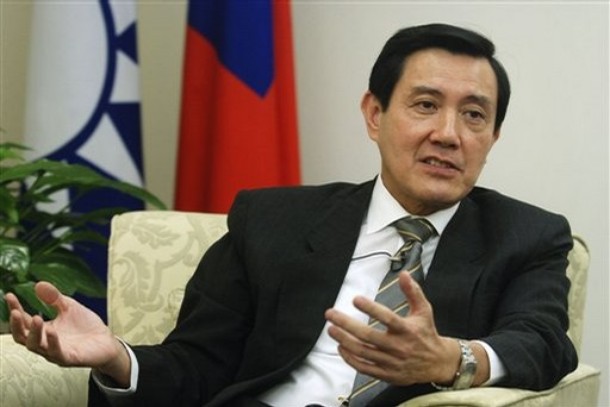 Ma Ying-Jeou. Photo credit: Digital Politics
Ma Ying-Jeou. Photo credit: Digital Politics
Additional factors also contributed to the KMT’s diminishment. These include the perennial resistance by deep green voters to a “loyal, Nationalist, Republic of China citizen” identity imposed on the island—what some term the “traditional cleavage” of Taiwanese identity politics—as well as heightened concerns about cross-strait relations.
The last several years have seen increasing fears of Ma pulling the country too close to China and surrendering Taiwan’s sovereignty. Worse still, the Ma Administration has carried out this risky foreign policy in “black box” fashion, subverting the democracy that all Taiwanese hold dear.
The Sunflower Movement crystallized many of these concerns and drew together an alliance focused on bringing greater transparency and public participation into government.
Which Future?
YET THE 2016 election ultimately signals a sea change far larger than a normal coalition of the disaffected. The transformation witnessed by society goes beyond material issues of housing and income, or the normal tussle of identity politics. It even transcends the protests over cross-Strait relations.
More fundamentally, the narrative of Taiwan has changed. In this world, people are turning to new, more meaningful sources of inspiration—a shift that has been happening for some time.
Instead of yesterday’s KMT and its vision of the ROC ascendant, the Taiwanese today have other battles to fight, different dreams to pursue. The issues most important to them are rooted in their everyday experience—in the story of their country.
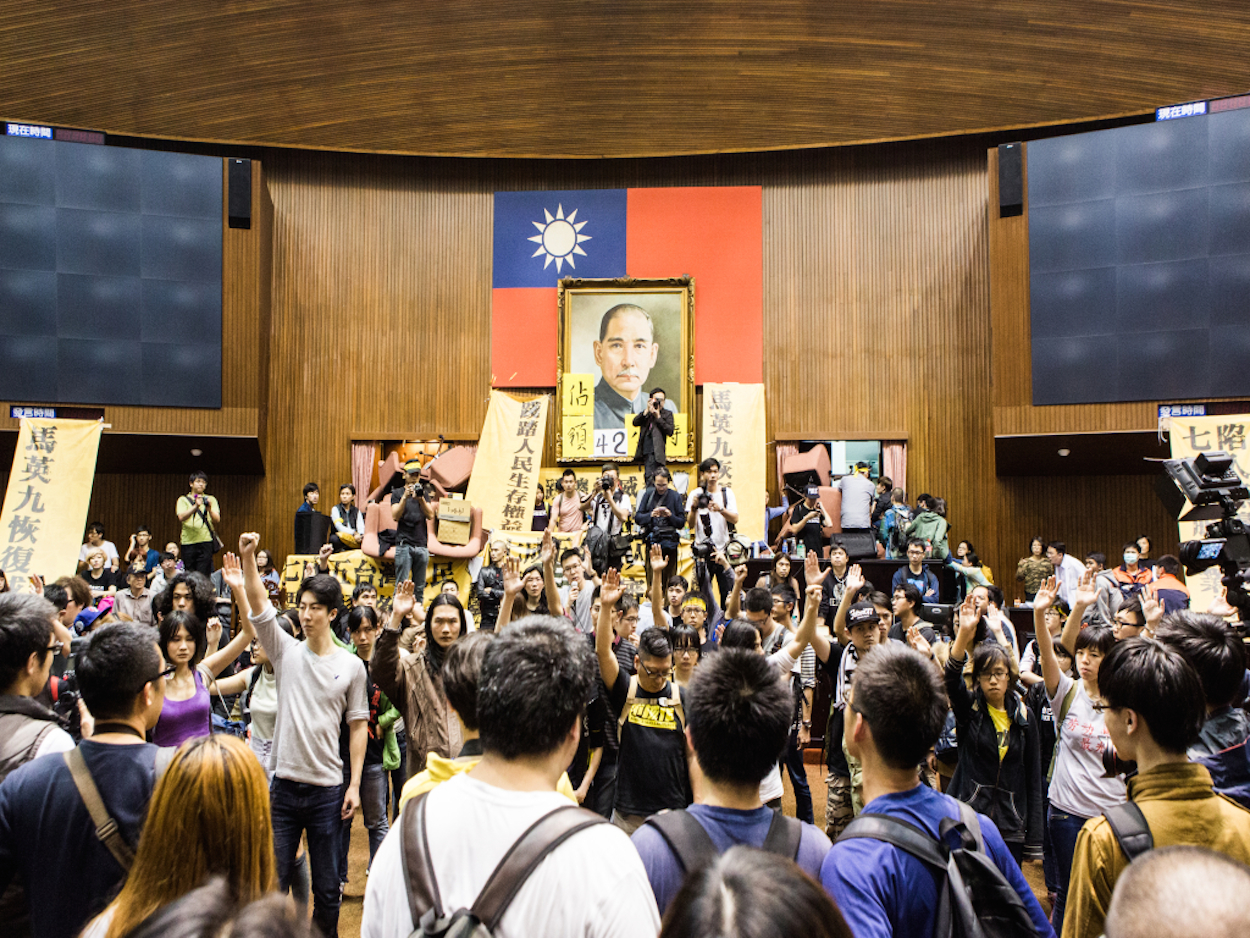 The Sunflower Movement occupation of the Legislative Yuan. Photo credit: Democracy at 4 AM
The Sunflower Movement occupation of the Legislative Yuan. Photo credit: Democracy at 4 AM
What is the future they look to?
Now, Taiwan is the future. In the public mind, Taiwan manifestly exists. While older voters struggled against the ROC regime, and defined themselves in opposition to the KMT’s brutality, the experience of younger generations is distinct. Despite the KMT’s best efforts at resistance, these citizens have been born in a relatively open, multi-ethnic, multi-party society.
For them, the existence of Taiwan is as natural as breathing. As a result, Taiwan is not only their lived reality—it is their inspiration. It is around this idea that society has coalesced.
A Sense of Dedication
FOR THOSE WHO lived through turbulent times and persevered through hardship and repression; for those who witnessed the transition from dictatorship to democracy, and found the courage to speak out loud; but most of all, for the energetic legions of young people organizing new NGOs, initiating political movements, and forging social enterprises—indeed, for every citizen seeking a way forward—Taiwan is the future.
If you are an innovator; if you are a maker, an artist, or a designer; if you seek to deploy your skills, and your heart, and your talents in service of a cause greater than yourself, it is the island of Taiwan—and its people—that draws you forward. It is this unique society you are part of that animates you, that is the recipient of your gifts and the target of your aspirations, and that launches you on a journey of a lifetime.
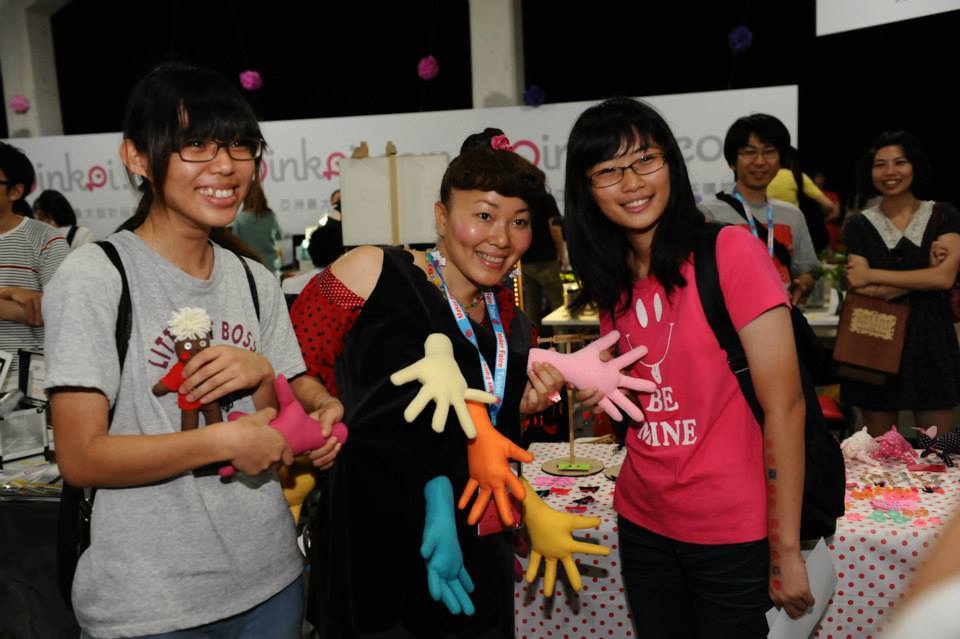 Photo credit: Makezine
Photo credit: Makezine
Tsai Ing-wen, the Democratic Progressive Party (DPP), and its pan-Green allies have been able to ride this wave by “illuminating Taiwan” through the hearts and minds of the people. They listened to the grassroots and assembled a common vision of the future in sync with organic movements blossoming across the island.
The Landscape Blooms
IN THIS NEW landscape, the center of power has shifted. A different political continuum will eventually align in Taiwan, with new cleavages and alliances. Who knows where the DPP sits in a country with tremendous environmental tendencies, growing LGBT activism, and progressive social policies? For now, the earth and sky are open, and new forces—both more liberal and more conservative—have the potential to rise.
Where does that leave the Chinese Nationalists? Regardless of whether the future yields growth or stagnation, a resurgent KMT cannot simply ride a wave of economic complaints back to office. Though it gets plenty of ire, in this new regime, the KMT is not so much hated as irrelevant.
“Irrelevant” here refers primarily to the public imagination—the constellation of possible causes to which a young person might consider dedicating him or herself. (If the KMT is able to hold onto its extravagant wealth—it is acknowledged to be the “world’s richest political party”—it might still leave a mark on politics for some time to come. Yet gobs of money did not save it from massive defeat in this contest, indicating the limits of wealth when faced with gradual and inexorable social transformation.)
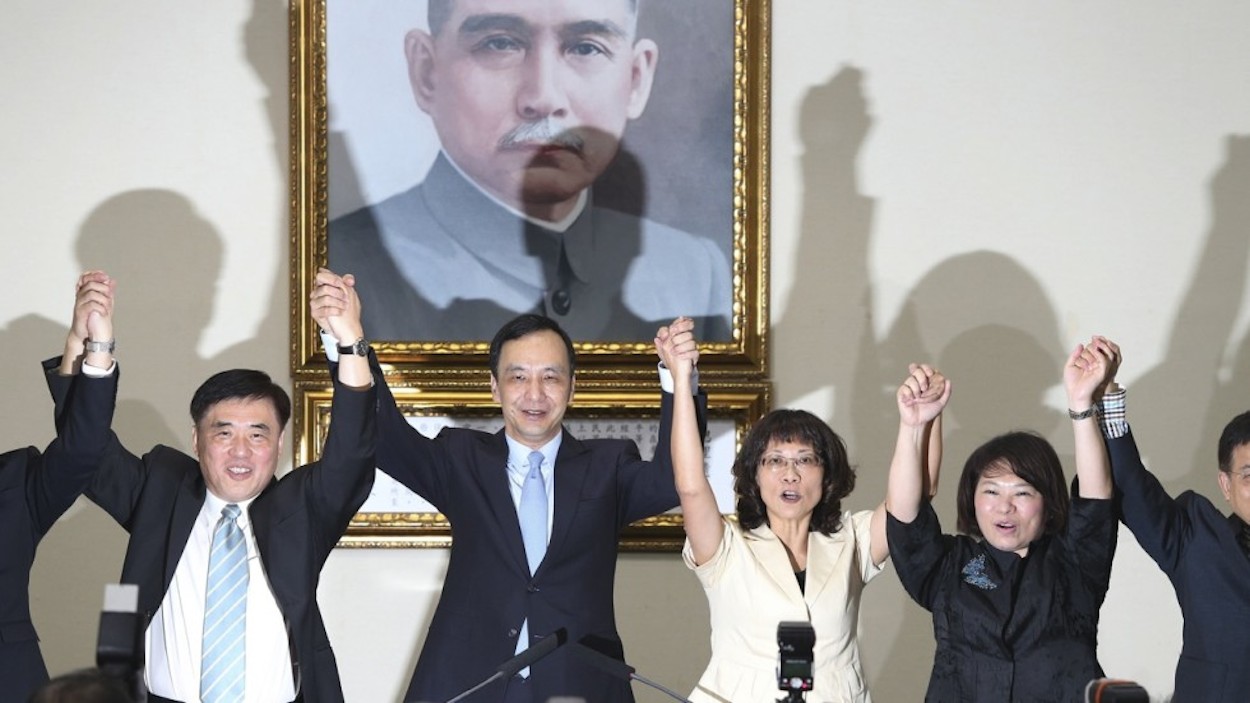 Photo credit: CNA
Photo credit: CNA
For the generation coming of age today, their inspiration is this beautiful, green land. Their focus is on cultivating a future for Taiwan and the Taiwanese people—on the island itself, and as part of a diverse and multi-polar world.
This doesn’t mean empathetic Taiwanese cannot envision a better future for people across all of East Asia, or send encouragement to their neighbors living under despotic regimes. It simply means the door has slammed shut on the KMT’s China-centric approach to defining the future, in favor of an idea that is more participatory and more resonant.
Look Around, Look Ahead
IN AN AGE of democracy, one may feasibly set aside the illiberal desires of authoritarian revanchists. But what of the Confucian conservatives, the republican nostalgists, the diehard ROC veterans who still live in Taiwan?
To these loyal citizens, one can say, “Please don’t mourn. Your children and grandchildren are coming into their own, and they are helping to build something just as meaningful as what you fought for, in the contemporary world.”
For theirs is a symbol as powerful as the Republic of China was to twentieth-century Asia, and even more tangible. Look closely; it is all around us.
Photo credit: Makezine
Though one national mission is fading into twilight, something new and equally beautiful awaits on the horizon. This new dream is closer to the grassroots—more organic, roaming free. Its environment is verdant and lush, charged with the oxygen of possibility. It shows practicality and humility, but it is also unbelievably radiant.
It is the vision of a society that is at once ecological and technological, culturally aware and modern, innovative and socially just. It is Taiwan, engaging its best and brightest minds in missions of enormous creativity, in service to the public.
For idealists and activists, as well as for pragmatic change-makers, exciting new ways forward have emerged. Best of all, many of these are of their own making.


 Venue of the first KMT National Congress in 1924 in Canton, China. Photo credit: WikiCommons
Venue of the first KMT National Congress in 1924 in Canton, China. Photo credit: WikiCommons Famous depiction of the 228 Incident, “The Terrible Inspection” by Huang Rong-zan
Famous depiction of the 228 Incident, “The Terrible Inspection” by Huang Rong-zan Ma Ying-Jeou. Photo credit: Digital Politics
Ma Ying-Jeou. Photo credit: Digital Politics The Sunflower Movement occupation of the Legislative Yuan. Photo credit: Democracy at 4 AM
The Sunflower Movement occupation of the Legislative Yuan. Photo credit: Democracy at 4 AM Photo credit: Makezine
Photo credit: Makezine Photo credit: CNA
Photo credit: CNA